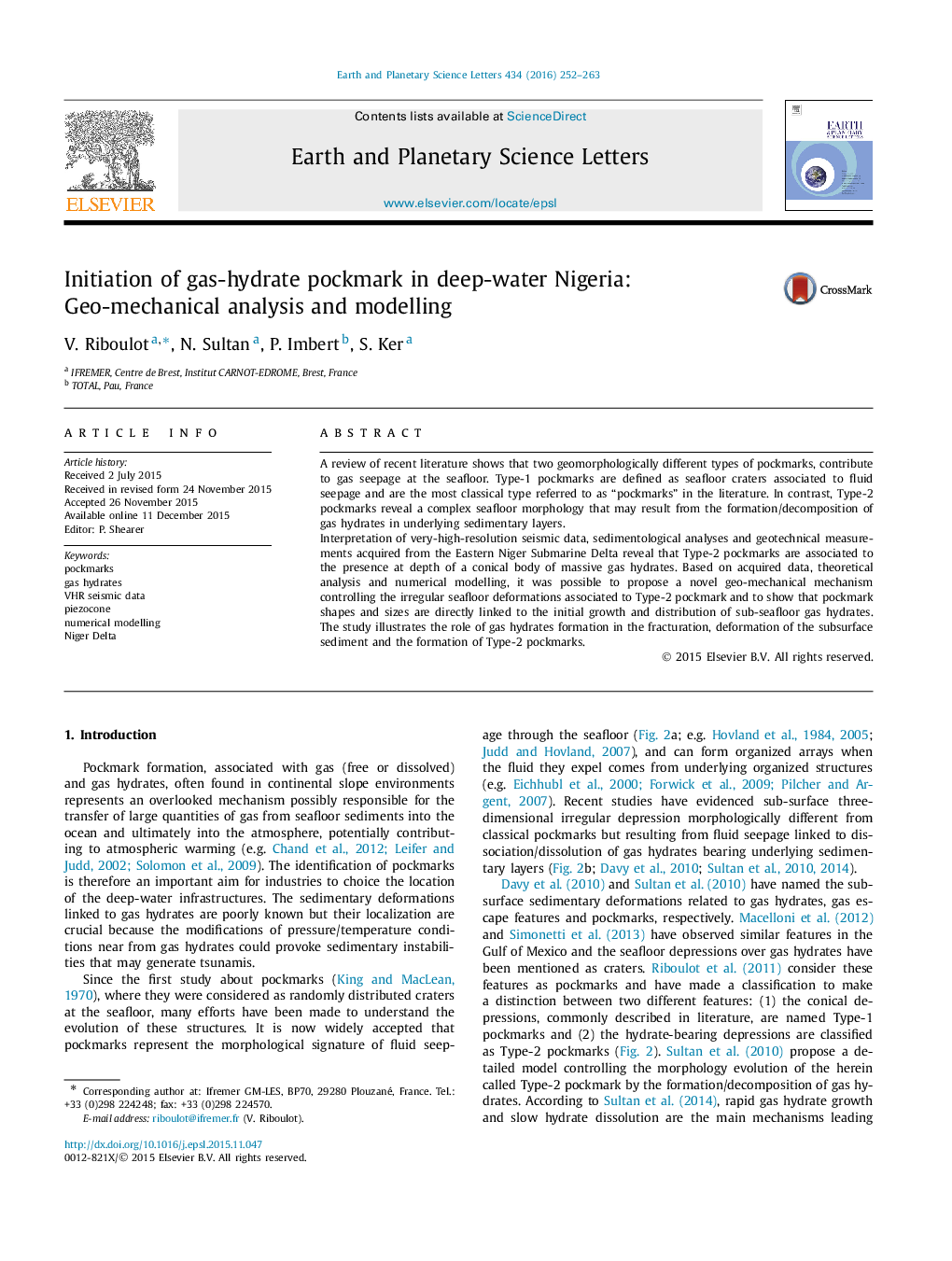| Article ID | Journal | Published Year | Pages | File Type |
|---|---|---|---|---|
| 6427746 | Earth and Planetary Science Letters | 2016 | 12 Pages |
â¢The morphology of the pockmarks directly associated to the dynamic of gas hydrates.â¢Initial stage of pockmark development is linked to the conical fracture formation.â¢Mechanism of gas-hydrate-pockmark formation is determined with numerical calculations.â¢Numerical calculations demonstrate the role of gas hydrates on subsurface fracturation.â¢A novel geo-mechanical mechanism is proposed for the gas-hydrate-pockmark formation.
A review of recent literature shows that two geomorphologically different types of pockmarks, contribute to gas seepage at the seafloor. Type-1 pockmarks are defined as seafloor craters associated to fluid seepage and are the most classical type referred to as “pockmarks” in the literature. In contrast, Type-2 pockmarks reveal a complex seafloor morphology that may result from the formation/decomposition of gas hydrates in underlying sedimentary layers.Interpretation of very-high-resolution seismic data, sedimentological analyses and geotechnical measurements acquired from the Eastern Niger Submarine Delta reveal that Type-2 pockmarks are associated to the presence at depth of a conical body of massive gas hydrates. Based on acquired data, theoretical analysis and numerical modelling, it was possible to propose a novel geo-mechanical mechanism controlling the irregular seafloor deformations associated to Type-2 pockmark and to show that pockmark shapes and sizes are directly linked to the initial growth and distribution of sub-seafloor gas hydrates. The study illustrates the role of gas hydrates formation in the fracturation, deformation of the subsurface sediment and the formation of Type-2 pockmarks.
